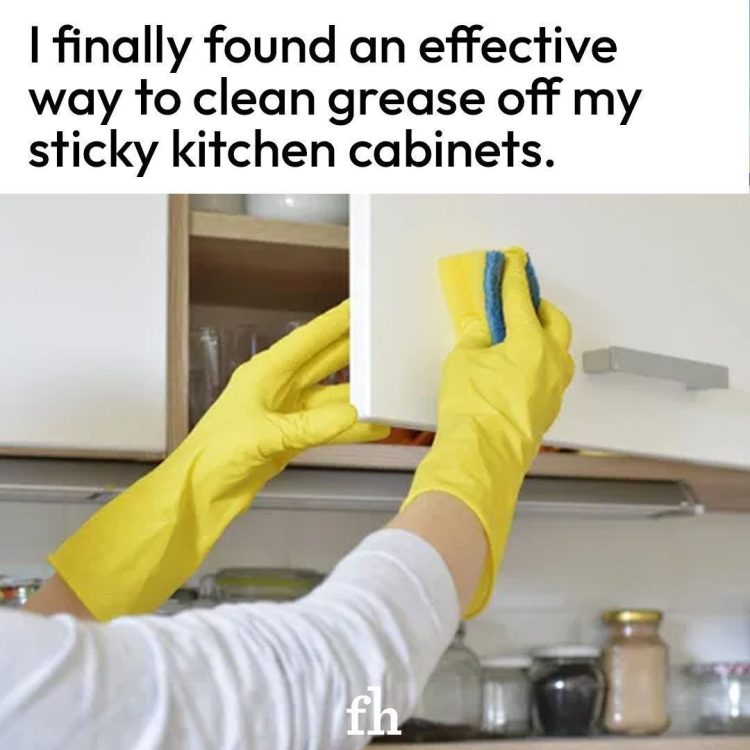Cabinet Exteriors
If using a degreaser, all you need to do is spray the solution onto your sticky cabinets and let it sit for one minute, then wipe clean with a soft cloth. (Yes, it really is that easy, which is why we so highly recommend the Ecolab Heavy-Duty Citrus Degreaser.) Repeat as needed for particularly stubborn grease.
If you’re going the DIY route, however, you’ll need a bit more elbow grease (pun intended). “For the outside, you want to start with warm water and dish soap,” says Deonarain. Dishwashing liquid has incredible grease-cutting ability, but it’s gentle and non-abrasive. That’s why Dawn is the go-to cleaner for oil-laden birds and other wildlife after a spill. It works and it’s safe.
To clean your cabinet exteriors, get a bucket of warm water and add a squirt of dishwashing liquid. (If you don’t have a lot of cabinets, just use a bowl and a few drops of soap.) Use a soft cloth or sponge — non-scrubby side only — and work the solution over the surface of the cabinets. Rinse off any soapy residue with a clean damp cloth and let dry.
Cabinet Interiors
“Inside cabinets can be an area where you don’t always see trouble spots immediately,” says Deonarain. Even if you’re diligent about wiping up food on the outside, sometimes you just don’t notice that drip of honey or spaghetti sauce that managed to sneak inside.
“Baking soda and vinegar are your go-to household ingredients for the removal of these difficult stains,” says Deonarain.
A 50/50 mixture of vinegar and water is the best recipe for general cleaning, according to the National Sanitation Foundation (now simply called NSF). White vinegar removes food and ingredients-based stains on almost any surface, Deonarain says.
When you encounter a dried-on forgotten stain inside your cabinets, rub a paste of baking soda and a little water on it to break it free. Wood cabinet interiors respond well to baking soda, Deonarain says. It’s abrasive enough to remove stains and safe around food.
While it’s tempting to mix them, it’s not necessary. Cleaners work because they’re acids or bases. Vinegar is a weak acid, and baking soda a weak base. Mixing them creates carbon dioxide, which can facilitate removal of soil but neutralize the cleaning power of the individual ingredients.
Stubborn Stains
If you’ve discovered a crusty, unidentifiable glob on your cabinet exterior that’s not responding to the sponge or microfiber cloth, grab an old toothbrush. (Make sure it won’t be used again for teeth when you’re done!)
Using your trusty degreaser, coat the stain in solution and let sit for one minute, then scrub the stain with the toothbrush until the abrasive action breaks it free. Finish by wiping down the cabinet with your damp microfiber cloth or sponge.
Don’t use vinegar or baking soda on the exteriors of your cabinets unless you test them first. Both substances can damage the surface of wooden cabinets in particular. Test an inconspicuous spot, and if it looks okay, go ahead. Just make sure to immediately rinse off the cleaners after they’ve done their job on the exterior stains.
Quarterly Cleaning
Periodically, take everything out of your kitchen cabinets so you can take action on stains before they sit too long, says Deonarain. He recommends doing this quarterly, or you can stagger the job by working in three sections. Each month do a different section, which works out to quarterly for all cabinets.
“Not only will it help you identify and eliminate stains, but it will also help you declutter and keep organized,” Deonarain says.
